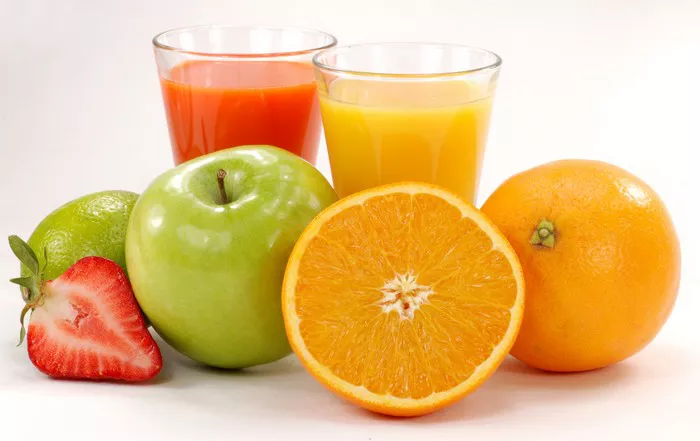Blending fruits to make delicious smoothies or other concoctions is a popular and healthy practice. However, not all fruits play well together in the blender. Some combinations can lead to unpleasant tastes, digestive issues, or even chemical reactions that affect the quality and safety of the final product. In this extensive article, we will explore the various reasons why certain fruits should not be blended together and identify specific combinations to avoid.
Chemical and Nutritional Incompatibilities
Papaya and Kiwi with Other Fruits: Papaya contains an enzyme called papain, and kiwi contains actinidin. These enzymes are proteases that can break down proteins. While this can be beneficial in some cases, when combined with certain fruits that have proteins or enzymes that are sensitive to them, it can cause problems. For example, if you blend papaya or kiwi with dairy – based products like yogurt or milk in large quantities, the enzymes can start to break down the proteins in the dairy prematurely. This can lead to a curdled or separated texture and an off – taste.
Similarly, if you blend these fruits with other fruits that have delicate proteins or enzymes of their own, it might disrupt the normal functioning of those enzymes. For instance, some tropical fruits have enzymes that are crucial for their flavor and nutritional value, and the presence of papain or actinidin from papaya or kiwi respectively could interfere with them.
Pineapple and Bromelain: Pineapple contains bromelain, another protease enzyme. When blended with fruits that are rich in gelatin – like substances or certain proteins, it can cause issues. For example, if you try to blend pineapple with fruits that are often used in jams or jellies, such as strawberries or raspberries that have natural pectin, the bromelain can break down the pectin structure. This can prevent the mixture from setting properly if you were planning to use it in a recipe that requires some form of gelling.
Also, when combined with high – protein fruits like guava, the bromelain can affect the protein structure. This might not only change the taste but also reduce the nutritional value of the blend as the proteins may not be absorbed as effectively by the body.
Vitamin and Mineral Interactions
Calcium – Rich Fruits and Oxalate – Rich Fruits: Some fruits are rich in calcium, like figs. When blended with fruits that are high in oxalates, such as rhubarb, there can be a problem. Oxalates can bind with calcium to form calcium oxalate crystals. In the body, these crystals can contribute to the formation of kidney stones in some people. While the amount of oxalate and calcium in a single blended fruit drink might not be enough to cause an immediate issue, regular consumption of such combinations could increase the risk over time.
Iron – Absorption and Vitamin C – Rich Fruits: Fruits rich in vitamin C, like oranges and strawberries, are known to enhance iron absorption. However, if you blend them with fruits that contain compounds that inhibit iron absorption, it can be counterproductive. For example, tannin – rich fruits like persimmons can bind to iron and reduce its bioavailability. So, if you blend oranges with persimmons, the beneficial effect of the vitamin C in oranges on iron absorption from other sources in your diet might be negated.
Taste and Flavor Incompatibilities
Citrus Fruits and Melons: Citrus fruits like lemons, limes, and grapefruits have a strong, acidic, and zesty flavor. When blended with melons, which have a mild, sweet, and often watery flavor, the citrus can completely overpower the delicate taste of the melons. The result can be a harsh and unbalanced flavor. For example, a blend of watermelon and lemon might sound refreshing, but in reality, the lemon’s acidity can make the watermelon taste bland and the overall combination can be too sour.
Tropical Fruits and Berries with Strong – Flavored Vegetables: Tropical fruits like mangoes, pineapples, and papayas have their own distinct sweet and rich flavors. Berries also have unique sweet and tart profiles. When these are combined with strong – flavored vegetables like broccoli, Brussels sprouts, or even onions (if you were to consider them in a savory – fruit blend), the result is often an unpleasant and discordant flavor. The pungent and earthy flavors of these vegetables clash with the sweet and delicate flavors of the fruits.
Astringency and Bitterness
Persimmons and Apples: Persimmons have a unique flavor that can be sweet and slightly astringent. When blended with apples, especially tart apples like Granny Smith, the astringency of the persimmons can be enhanced. This can make the blend taste bitter and unappealing. The tannins in both fruits can interact in a way that magnifies this astringent effect.
Traditional Pairings and Avoidances
Cultural Fruit Combinations in Different Regions: In some cultures, certain fruit combinations are traditional and well – loved, while others are avoided. For example, in some Asian cultures, the combination of durian with other fruits is carefully considered. Durian has a very strong and unique flavor, and when combined with some mild – flavored fruits, it can completely overwhelm them. In Western cultures, there are also traditional pairings like apples and cinnamon, but there are also combinations that are less common, such as apples with bitter melon, which is not typically done due to the strong contrast in flavors.
Culinary Traditions and Fruit Blending: In culinary traditions, there are specific uses for fruit blends. In baking, for example, certain fruit combinations work well for fillings or toppings. However, some fruits that are not usually combined in baking, like figs and oranges in a traditional pie filling, might not be a good choice because the flavors and textures do not meld well. In smoothie – making traditions, there are also common combinations that are favored, and knowing which fruits not to deviate from these norms can help ensure a better – tasting final product.
Symbolism and Perceived Incompatibilities
Fruit Symbolism in Different Cultures: In some cultures, fruits have symbolic meanings. For example, in some religious or cultural contexts, certain fruits are considered sacred or have specific connotations. Blending these fruits with others that have different or opposing symbolic meanings might be avoided. While this may not have a direct impact on the taste or nutritional value of the blend, it can affect the cultural acceptability of the combination.
Perceived Incompatibilities Based on Appearance: Sometimes, the appearance of fruits can influence our perception of whether they should be blended together. For example, a bright red strawberry and a purple – black aubergine (while aubergine is a vegetable, this example illustrates the point of visual perception) might seem like an odd combination just based on their colors. This visual perception can subconsciously affect our willingness to try a blend and might also influence our perception of the taste even before we sample it.
Conclusion
In conclusion, the world of fruit blending is filled with both harmonious and discordant combinations. Understanding the chemical, nutritional, taste, digestive, texture, seasonal, cultural, and other aspects related to fruit combinations can help us make better choices when creating our own fruit blends. By avoiding the combinations mentioned above, we can ensure that our smoothies, fruit sauces, and other blended fruit creations are not only delicious but also safe and satisfying. Experimentation is still key in the culinary world, but having this knowledge in mind can prevent us from making some of the common mistakes when it comes to combining fruits. So, the next time you reach for your blender, consider these factors and create fruit blends that are a true delight for the senses.
Related Topics:



























